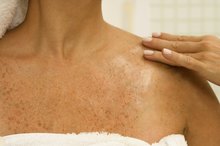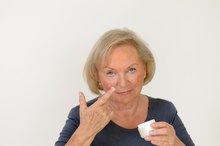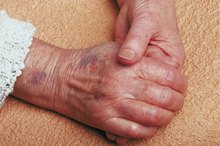What does fact checked mean?
At Healthfully, we strive to deliver objective content that is accurate and up-to-date. Our team periodically reviews articles in order to ensure content quality. The sources cited below consist of evidence from peer-reviewed journals, prominent medical organizations, academic associations, and government data.
The information contained on this site is for informational purposes only, and should not be used as a substitute for the advice of a professional health care provider. Please check with the appropriate physician regarding health questions and concerns. Although we strive to deliver accurate and up-to-date information, no guarantee to that effect is made.
Tyrosine & Vitiligo
Vitiligo is a skin condition in which patients develop white patches on their bodies because they are unable to produce the pigment responsible for giving their skin its color 1. Vitiligo cannot be cured, but certain treatment options are available 1. One option is the use of tyrosine supplements, which can help stimulate pigment production. While it is not necessarily hazardous to your health, patients can seek treatment for vitiligo in order to stop its progression 12.
Definition
Vitiligo is the result of a loss of melanin in your skin 1. Melanin is the pigment that gives skin its color. When you have vitiligo, you will lose the normal color of your skin, resulting in the formation of white patches that will slowly enlarge 1. This occurs as melanocytes, the cells that produce melanin, die or stop producing the pigment.
Symptoms
Skin Discoloration in Children
Learn More
The white patches caused by vitiligo can emerge anywhere, but they are usually found on sun-exposed areas like the face, hands, feet and arms 1. This usually first occurs between the ages of 10 and 30. Other, less-frequent symptoms include premature whitening or graying of the hair, eyebrows and eyelashes, whitening of the mucous membranes and loss of color in the retinas of the eyes.
- The white patches caused by vitiligo can emerge anywhere, but they are usually found on sun-exposed areas like the face, hands, feet and arms 1.
Causes
The exact cause of vitiligo is not known, but several theories exist 1. One is that an autoimmune disease, in which your body mistakenly attacks itself, causes it. In the case of vitiligo, the immune system would attack and destroy the melanocytes 1. Occasionally, vitiligo occurrences are prevalent within families, so it could possibly be hereditary 1. Other possible causes include skin damage, such as sunburn, or emotional stress.
Tyrosine
How to Restore the Pigment to White Spots on the Skin
Learn More
Tyrosine is an amino acid that is made naturally by the body from another amino acid called phenylalanine. It is used mainly to build neurotransmitters, cells that comprise your nervous system. In addition, tyrosine helps to produce melanin. According to University of Pittsburgh Medical Center, preliminary studies suggest that taking phenylalanine supplements, which will turn into tyrosine in the body, can help treat vitiligo 1.
- Tyrosine is an amino acid that is made naturally by the body from another amino acid called phenylalanine.
Treatment
As soon as you notice any changes with your skin, contact your physician immediately. There is no cure for vitiligo; treatment aims to stop or slow its progression 1. Medical treatments include topical creams and ointments, medications taken orally and laser or light therapy. A more aggressive form of treatment is skin grafts, in which skin from one part of the body is surgically removed and reattached somewhere else. This is usually done to treat small patches. You could also treat vitiligo simply by applying sunscreen or cosmetics 1.
Related Articles
References
- Mayo Clinic: Vitiligo
- National Institutes of Health: Vitiligo
- Grimes PE. (2017). Vitiligo: Pathogenesis, clinical features, and diagnosis. Tsao H, ed. UpToDate.
- Baldini E, Odorisio T, Sorrenti S, et al. Vitiligo and Autoimmune Thyroid Disorders. Front Endocrinol (Lausanne). 2017;8:290. doi:10.3389/fendo.2017.00290
- Dermatologist offers unique treatment for vitiligo skin discoloration. UT Southwestern Medical Center. July 16, 2015.
- Genetics & Incidence. Vitiligo Support International.
- Vitiligo: Diagnosis and treatment. American Academy of Dermatology.
- Liu LY, Strassner JP, Refat MA, Harris JE, King BA. Repigmentation in vitiligo using the Janus kinase inhibitor tofacitinib may require concomitant light exposure. J Am Acad Dermatol. 2017 Oct;77(4):675-82. doi: 10.1016/j.jaad.2017.05.043
- Vrijman C et al. The prevalence of thyroid disease in patients with vitiligo: a systematic review. Br J Dermatol 2012 Dec;167(6):1224-35. doi: 10.1111/j.1365-2133.2012.11198.x
Writer Bio
Andrew Sheldon is a writer from New York. His writing focuses on health and exercise, but he is knowledgeable in various other areas. Sheldon has published articles on and Fitday.com other online health and fitness publications. He graduated from New York University with a Bachelor of Science degree.









